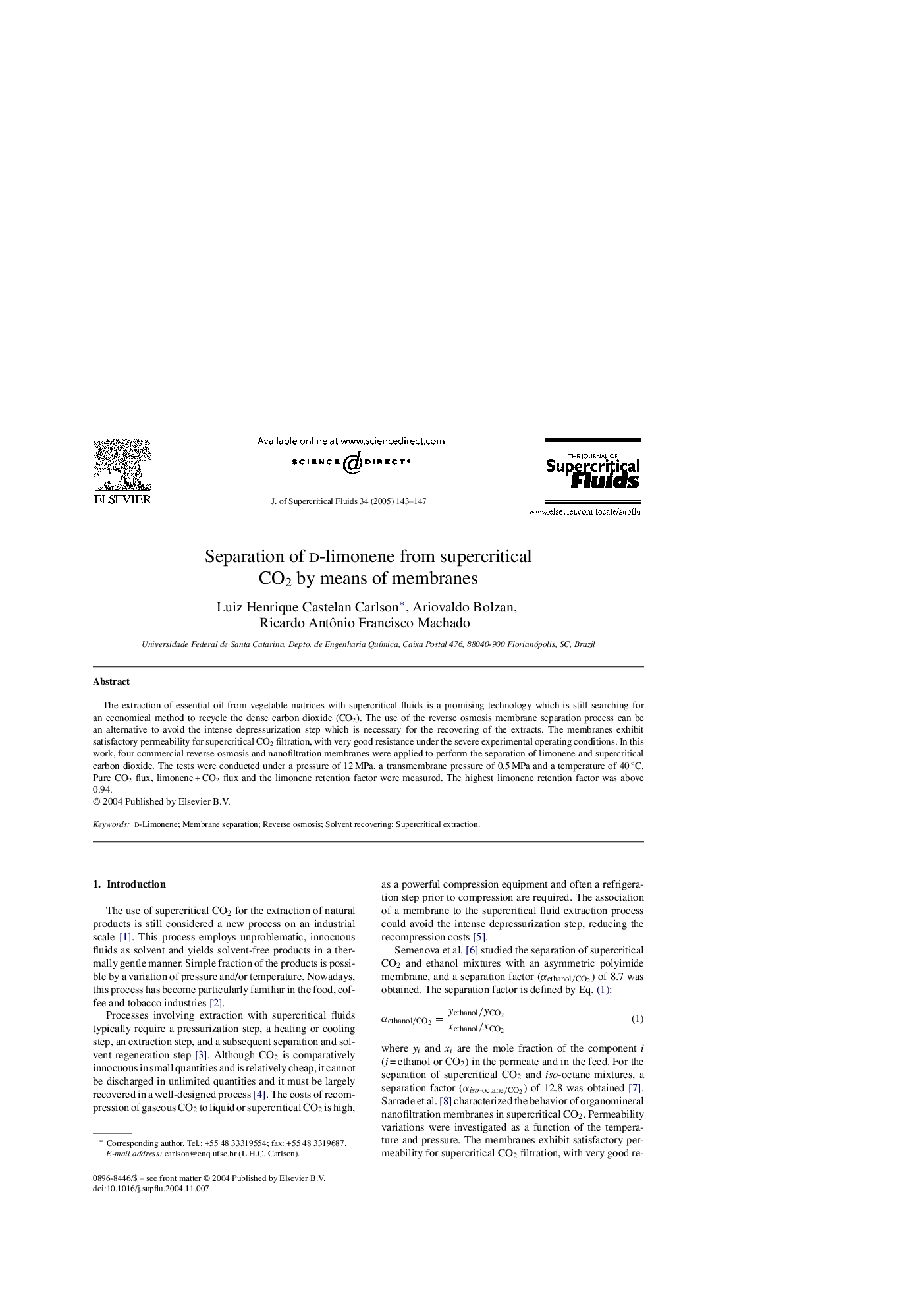| Article ID | Journal | Published Year | Pages | File Type |
|---|---|---|---|---|
| 9635810 | The Journal of Supercritical Fluids | 2005 | 5 Pages |
Abstract
The extraction of essential oil from vegetable matrices with supercritical fluids is a promising technology which is still searching for an economical method to recycle the dense carbon dioxide (CO2). The use of the reverse osmosis membrane separation process can be an alternative to avoid the intense depressurization step which is necessary for the recovering of the extracts. The membranes exhibit satisfactory permeability for supercritical CO2 filtration, with very good resistance under the severe experimental operating conditions. In this work, four commercial reverse osmosis and nanofiltration membranes were applied to perform the separation of limonene and supercritical carbon dioxide. The tests were conducted under a pressure of 12 MPa, a transmembrane pressure of 0.5 MPa and a temperature of 40 °C. Pure CO2 flux, limonene + CO2 flux and the limonene retention factor were measured. The highest limonene retention factor was above 0.94.
Related Topics
Physical Sciences and Engineering
Chemical Engineering
Chemical Engineering (General)
Authors
Luiz Henrique Castelan Carlson, Ariovaldo Bolzan, Ricardo Antônio Francisco Machado,
